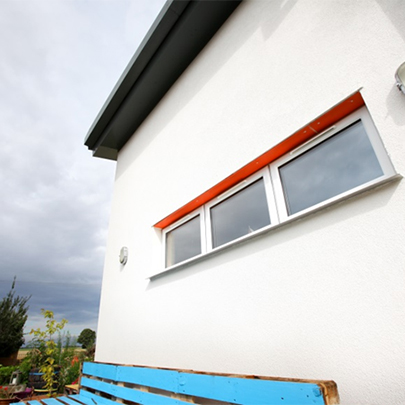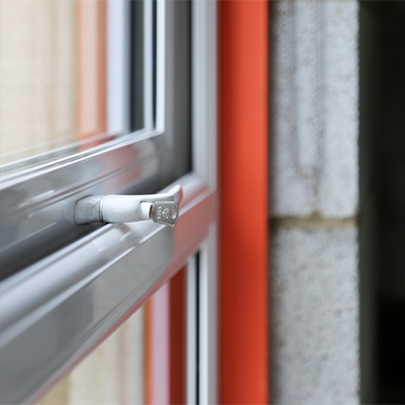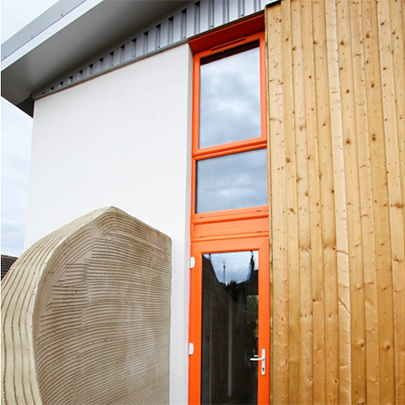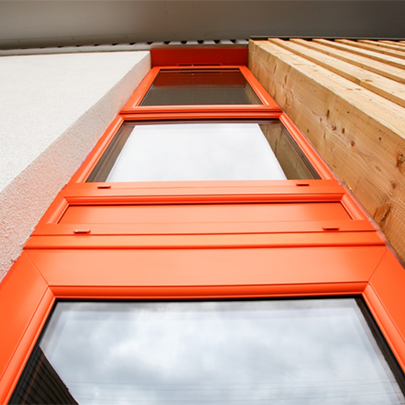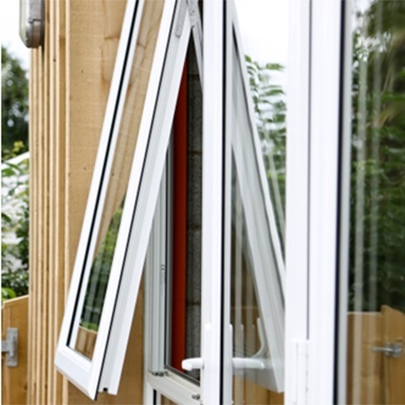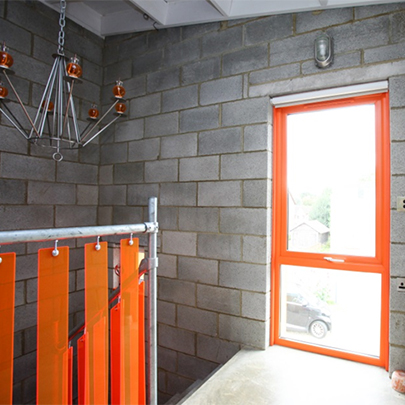Two years ago, Jo and Andy Thompson were living in social housing at Unity Gardens, Long Sutton, Lincolnshire - one of the UK’s first zero-carbon housing developments.
They had resigned themselves to being lifelong renters, having no spare cash for a deposit; buying or even building their own home was a pipe dream. “We would watch TV programmes like Grand Designs, but they were utterly depressing because everyone had such big budgets,” says Andy.
Then one day, the dream of owning their own home became more of a reality.
“Jo’s mother moved into a semi-detached house in South Lincolnshire and was sitting outside one day wondering how she would look after the huge garden as she got older.”
In June 2012, Jo and Andy did some sums and took the plunge by offering to buy some of the garden to build their own house. Jo comments: “My mum was overjoyed when we offered to buy the land – it was her chance to help us and at the same time, our chance to help her too.”
Eco friendly
“When it came to looking at house designs, we were inspired by the development that we used to live in, which was eco-friendly with no utility bills - and nice and simple. We employed the help of local Architect Dr Jerry Harrall, a multi award winning designer of eco-friendly developments.”
Jerry, a Chartered Architect, developer and independent researcher, qualified in 1995 and has accumulated fourteen years of first-hand experience designing, building, living, working in and monitoring naturally heated, naturally ventilated buildings. He has now to his credit designed 14 buildings that hold UK’s highest Energy Performance Certificates, as well as the seven lowest air pressure tests on record.
The Thompsons’ previous home, Unity Gardens, is an award-winning development created and designed by Jerry, comprising six carbon negative single-storey dwellings in Lincolnshire. The development was the first near-autonomous housing scheme of its kind and has achieved a Code for Sustainable Homes Rating of Level 4.
“Once Jerry had designed our new home, which we’d named ‘FranklyBee’, he submitted the plans – keeping it simple to avoid any hold ups. We then sorted the finance, applying for a self-build mortgage,” continues Andy.
Jerry reflects on the Planning process: “The first challenge came after submitting the plans to South Holland District Council. The planners required a consensus as to whether to support the application, due to the building being classed as ‘modern architecture.’ Luckily, however, the same local authority’s Building Control team had a completely opposite approach and championed the designs from the onset.
“The issues arose as they were focusing on what wasn’t in the building as opposed to what was. The house has no foundations, being simply built on a garage floor slab – and has no cavity walls, no plasterboard and no mechanical ventilation.”
The Build
It took 12 months from submitting the plans to beginning the build.
Andy continues: “In March 2014, we moved into a caravan on-site and building began.
“Due to the differences in the way the building was designed, trades-people had to take a new approach to the way they worked. Bricklayers, for example, weren’t required to lay bricks or leave cavities in the wall.
“Our main objective was to build an eco-friendly home with no utility bills – exactly as we had been living in previously.”
Jerry explains: “The weakest area of a house is traditionally the windows, as this is where most of the heat is lost. Most standard house builders will usually get U-values of around 1.7W/m2K - but the aim for FranklyBee was to get below 1.0W/m2K.”
Jo says: “We hadn’t heard of Liniar windows before, but our architect recommended them as he had used them in previous projects. We did look at timber as an option, but we had seen it used in other developments where it had warped and had problems with the seals. So, as we wanted a large opening, we didn’t want to risk it.
“We wouldn’t touch aluminum with a bargepole! It was just too expensive and not at all energy efficient. So really, we were set on having PVCu from the beginning. We found a local Liniar installer, Bob Mills, who could help us achieve our objectives.”
Bob ordered windows with Liniar EnergyPlus six-chamber profile, plastic composite spacer bar, triple glazing and low emissivity film on the inside and outside to achieve a U-value of 0.8W/m2K. By using this combination, the heat loss from the house was reduced by 50%. The windows were installed on a layer of external insulation as opposed to the usual cavity, to further increase thermal efficiency.
Modern living
“FranklyBee represents modern living,” claims Andy, “and we’re delighted that the building is ‘Energy Positive’ by 40% - meaning that it generates 40% more energy that it uses. Putting that into numbers, our house generates around 5,000 kWh of energy a year, but we only use around 3,000 kWh.
“Overall, the build went smoothly from start to finish. It was constructed exactly as it was designed, and best of all, we received our first energy ‘bill’ the other day – as we’d hoped, it was actually a cheque!”
Liniar helps generate energy for eco-house project
Liniar
View company profile| T | 01332 883900 |
|---|---|
| F | 01332 883901 |
| E | info@liniar.co.uk |
| W | Visit Liniar's website |
| Flamstead House, Denby Hall Business Park, Denby, Derbyshire, DE5 8JX |

